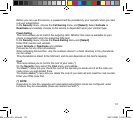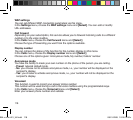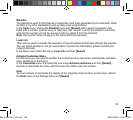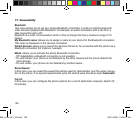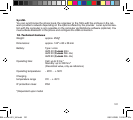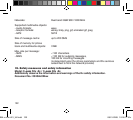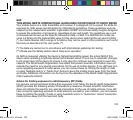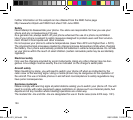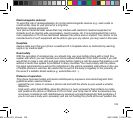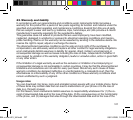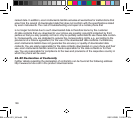125
Electromagnetic material
To avoid the risk of demagnetisation, do not let electromagnetic devices (e.g., cash cards or
credit cards) close to your phone for a long time.
Electronic medical equipment
Your phone transmits radio waves that may interfere with electronic medical equipment or
implants such as hearing aids, pacemakers, insulin pumps, etc. It is recommended that a mini-
mum separation of 15 cm be maintained between the phone and an implant. Your doctor or the
manufacturers of such equipment will be able to give you any advice you may need in this area.
Hospitals
Always make sure that your phone is switched off in hospitals when so instructed by warning
signs or by medical staff.
Road safety
With the exception of emergencies, you should only use your mobile phone with a hand free
system with which you can operate your phone without distraction from traffic events If you still
would like to make a call, stop and park safely before making a call. Be aware that making a call
without a hands free system is prohibited in many countries. You must comply with the prevai-
ling legal requirements as well as the indications in the vehicle operating instructions on the use
of mobile phones in vehicles. Be careful that no part of the body is regularly in the proximity of
the aerial if a metallic shield exists (e.g., automobile roof…).
Distance of operation
This phone has been tested and meets radiofrequency exposure and electromagnetic field
guidelines when used as follows:
- against the ear: place or receive a phone call and hold the phone as you would a wireline
telephone.
- body worn: when transmitting, place the phone in a carry accessory that contains no metal
and positions the phone a minimum of 2.5 cm from your body. Use of other accessories may
not ensure compliance with radiofrequency exposure and electromagnetic field guidelines. If
you do not use a body worn accessory and are not holding the phone at the ear, position the
BAL x.com 401_UK.indd 125 08.01.2008 10:00:17 Uhr



